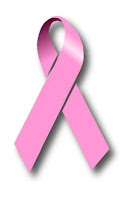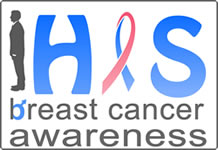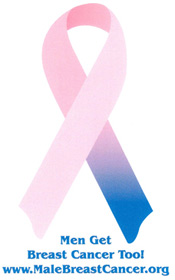Last year I celebrated my recovery from preventive surgery to remove my ovaries with a 5K run in the
9th Annual KICKIN’ CANCER! 5K Walk/Run & Women's Healthcare Expo to raise funds and awareness for the early detection and prevention of both ovarian and breast cancer. Last year, our team,
Team FORCE raised more than $9,000 for genetic testing and ovarian cancer research. This year we are getting an earlier start on the 10th Annual Kickin' Cancer Walk/Run. Our team is now officially launched and we want YOU to join us, regardless of whether you live in Southern California.
One of my
first blogs was about the desperate need for increased funding for ovarian cancer research, especially research dollars for early detection of the disease so that it will not continue to claim so many lives. Millions of dollars have been raised for breast cancer research over the past three decades because women, multitudes of women, have joined arms and walked to support this important cause. Progress is being made in breast cancer battle, less so with ovarian cancer.
I have been involved with
FORCE, Facing Our Risk of Cancer Empowered, for the past several years. FORCE is a national organization that supports and advocates for women like me, women at high risk for both breast and ovarian cancer. FORCE is a truly wonderful organization that is making a difference in the lives of high-risk women and men (yes, men do get breast cancer too and do carry mutations on BRCA genes). FORCE is partnering with the sponsor of KICKIN’ CANCER, the Lynne Cohen Foundation, to raise money for this important cause and I am the captain of “Team FORCE.”
In addition to funding important research into ovarian cancer early detection and cures, the Lynne Cohen Foundation recognizes that saving lives now means providing genetic testing services and breast and ovarian cancer screening services to women now. Unfortunately, not all women have health insurance that will pay for these services. In response to this need, the Lynne Cohen Foundation has established a network of preventive care clinics at major cancer centers around the country. These preventive care clinics are for women at high risk for breast and ovarian cancer, including women with BRCA mutations, women previously diagnosed with breast or ovarian cancer, relatives of women diagnosed with breast or ovarian cancer, women diagnosed with precancerous conditions that raise future risk of disease, and Ashkenazi Jewish women. One of these preventive care clinics is the
Lynne Cohen Foundation Preventive Care Clinic for Women’s Cancer’s at USC/Norris Cancer Center here in Los Angeles. Women who participate in this clinic receive breast and gynecologic exams and screening; genetic counseling; lifestyle counseling; education about breast and ovarian cancer; and access to the latest early detection and prevention trials for women’s cancers. Genetic testing for BRCA mutations may be appropriate for many of these women but because of the high cost of genetic testing, funds are not always available for this service.
One of the goals of Team FORCE is to make sure that no woman who needs genetic testing for breast and ovarian cancer risk is denied access to this lifesaving information because of cost. For this reason, half of the funds raised by Team FORCE will go to the Lynne Cohen Foundation Preventive Care Clinic for Women’s Cancer’s at USC/Norris Cancer Center to endow a genetic testing fund. The other half of the money raised by Team FORCE will go to FORCE to support ovarian cancer research and awareness.
Did you know:
• Ovarian cancer is the deadliest gynecologic cancer, striking more than 22,000 women in the United States and killing more than 15,000 each year.
• Invasive breast cancer strikes more than 200,000 women in the United States, killing approximately 40,000 each year.
• 20,000 women each year are diagnosed with hereditary breast or ovarian cancer.
Identifying high-risk women makes it possible to screen for the disease and to take preventive action. Currently, the Lynne Cohen Foundation has more than 3,000 diverse women registered in its high-risk preventive care programs nationwide. These unique programs provide women with a comprehensive approach to preventive care, individual risk assessment, and access to the latest clinical/research trials. Data from these programs is collected in the Lynne Cohen Data Registry for collaborative, multi-institutional research.
I believe that this collaboration between FORCE and the Lynne Cohen Foundation is important and well worth the effort. I am particularly proud of the fact that the Foundation has raised more than $6 million to support research and preventive care for the early detection and prevention of ovarian and breast cancer since 1998.
Here is how you can help:
1. Join
Team FORCE and come out on September 18th and walk (or run) with me! To join visit
www.kickincancer.com, select “Register Here,” select “Join a Team” then from the drop down menu at the bottom of the box select “Team FORCE.” OR click on "Join Our Team" from the
Team FORCE page. Be sure to enter the discount code “force” on the individual registration page and you will receive a $5 discount on registration for the event.
OR
2. Sponsor me or another participant on TEAM FORCE! To donate online, visit the
Team FORCE page, pick a team member and you can donate to them from their individual page. Checks made payable to KICKIN’ CANCER! can be mailed to P.O. Box 7128, Santa Monica, CA 90406-7128. Please include the name of the Team FORCE member in the memo line of your check. Donations are tax deductible as provided by law.
OR
3. Become a virtual runner. You can join our team as a virtual runner, raise money for our team, and show your support for the cause no matter where you are in the country. You can run a 5K with your friends wherever you are and send us the photos to post on our
LA FORCE page!
Thank you for considering this request for support. If you have any questions about the Lynne Cohen Foundation, please visit www.lynnecohenfoundation.org, call 877.OVARY.11, or email info@lcfocr.org. For information about FORCE please visit
www.facingourrisk.org.
Thank you for supporting women's cancer research!
Sincerely,
Joi

This work is licensed under a
Creative Commons Attribution-NonCommercial 3.0 Unported License. Inquiries regarding rights should be directed to the
authors.






